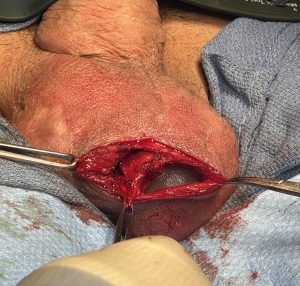Background: The scrotum is not typically seen completely empty in an adult. (absence of both testicles) But in rare circumstances can occur for a variety of reasons. If the testicles suffered torsion and/or infection usually one testicle may end up being lost but rarely does loss of both result. It is also possible that both testicles were undescended and this actually occurs in about one of every ten cases of undescended testicles.
When replacing the testicles with implants the origin of their absence becomes paramount. The size of the scrotal sac and whether it has considerable scar tissue inside or external scars on the outside will determine what size implants can be placed. For instance in bilateral undescended testicles the scrotal skin/sac never develops normally so bilateral standard sized implants may be all that can fit. Conversely if the testicles were lost in adulthood the scrotal sac is more developed albeing with scar tissue inside which may be able to accommodate larger implant sizes.
But regardless of implant sizes in bilateral placements it is important to create two separate compartments for the implants. This requires maintaining a midline septum of tissue. One wants to avoid creating one large single compartment in which both implants touch. Once the implants touch two separate encapsulations will not occur. Rather one single capsule (compartment) will develop with two implants moving around inside against each other which may make the capsule chronically leak serous fluid creating persistent fluid collections.
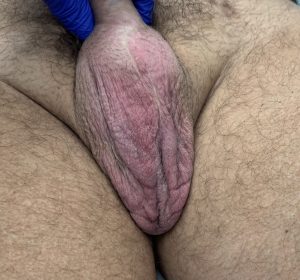
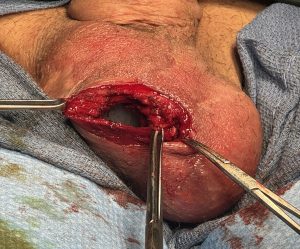
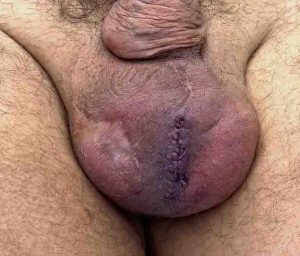
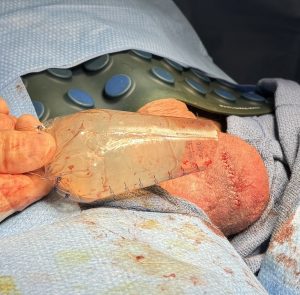
Key Points:
1) The empty scrotum can occur from loss of testicles due to torsion and/or infection.
2) How much the empty scrotum can stretch to accommodate implants due to its scar tissue can not be precisely determined beforehand.
3) The presence of scar tissue may allow for a good tissue septum t be maintained between the two implants.
Dr. Barry Eppley
World-Renowned Plastic Surgeon



